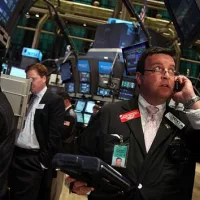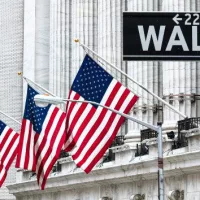
(NEW YORK) — Stock market turmoil earlier this month prompted some investors to ditch stocks in favor of an alternative typically viewed as safer but less exciting: bonds.
The renewed popularity of bonds follows months of heightened interest, since investors have sought to lock in high yields in anticipation of interest rate cuts at the Federal Reserve, experts told ABC News.
Lower interest rates would push bond yields downward and raise the value of pre-existing bonds obtained at a higher rate of return.
A surge in bonds has also coincided with a perception among some investors that equities have become overpriced, experts said.
“Investors have been interested in locking in higher yields before interest rates go down,” Reena Aggarwal, A professor of finance and director of the Georgetown Psaros Center for Financial Markets and Policy, told ABC News.
Bonds are essentially loans made by investors to corporations or governments. The price of a bond moves in the opposite direction as its yield, or the amount of interest accrued by a bondholder. In other words, when bond yields go down, bond prices go up.
Yields are heavily influenced by interest rates set by central banks, since the cost of borrowing determines how much interest an investor can charge a government entity or corporation in exchange for his or her loan.
Starting in 2022, a series of interest rate hikes at the Fed sent bond yields surging. That meant investors could obtain relatively high rates of return at low prices, Adam Lampe, CEO of Mint Wealth Management, told ABC News.
“For the first nearly 20 years of my career, bonds were boring,” Lampe said. “In the last couple years we were able to buy a lot of bonds at discount.”
At the outset of this year, however, the Fed forecasted three interest rate cuts, citing progress in its fight to bring down inflation. But price increases accelerated over the early months of 2024, prompting the Fed to all but abandon those cuts.
In recent months, good news in the inflation fight has brought the Fed back to the brink of an interest rate cut. The expectation of a coming interest rate has added urgency to the bond market, Lampe said.
“The window is closing very quickly,” Lampe added. “We’re at the peak, so bond values have the potential to go down.”
The chances of an interest rate cut at the Fed’s next meeting in September are all but certain, according to the CME FedWatch Tool, a measure of market sentiment. Market observers are split roughly down the middle about whether the Fed will impose its typical cut of a quarter of a percentage point or opt for a larger half-point cut.
“The more that rates are cut, bond prices will go up higher but bond yields will go down lower,” said Aggarwal.
Bonds also offer investors a relatively safe option in the event of a possible recession, some experts said.
A disappointing jobs report earlier this month raised concern that the economy may be slowing down faster than previously known.
The unemployment rate has soared this year from 3.7% to 4.3%. That trend has triggered a recession indicator known as the “Sahm Rule,” which says that a rise of 0.5 percentage points in the unemployment rate within a 12-month period typically precedes a recession.
Bonds provide investors with fixed, predictable returns, sheltering them from a potential downturn in the stock market if economic performance cratered, Yiming Ma, a finance professor at Columbia University Business School, told ABC News.
“The economy is slowing down and the risk of a downturn is going up,” Ma said. “That is usually when investors want to seek something safer.”
Copyright © 2024, ABC Audio. All rights reserved.














